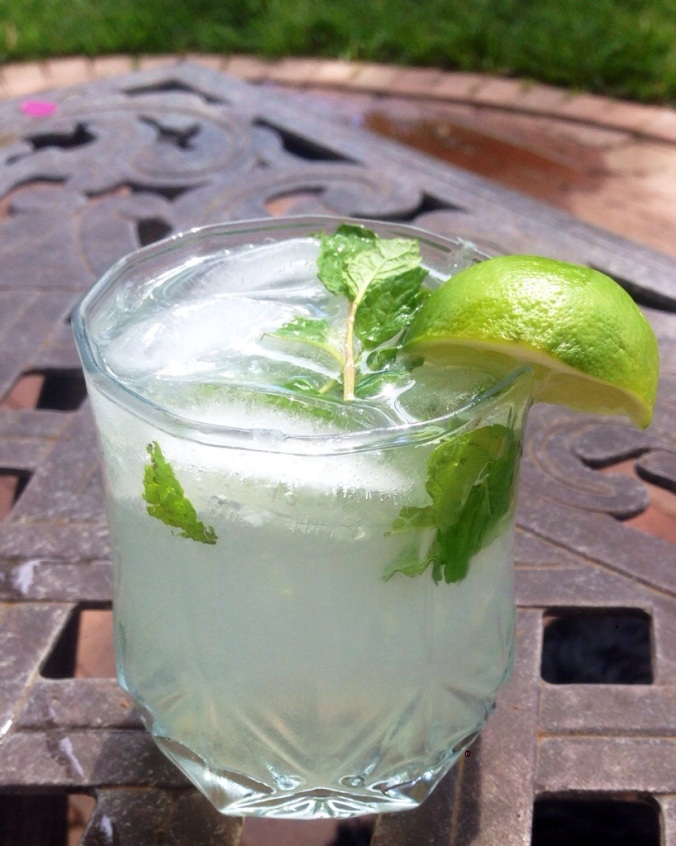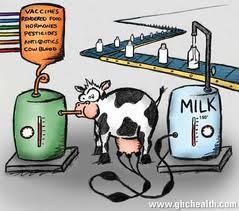Let’s recall a moment in time that’s not so pretty. It’s when that painful, awkward bloating starts after you ate brown rice. Or wheat. Or quinoa. Or any form of grain, really. After the bloating, you start feeling gassy. Or nauseated. Or constipated (or just uncomfortable from reading all of those descriptive digestion terms). Regardless, you just KNOW you’re not going to digest that bowl of “whatever grain you ate” later. It’s embarrassing, and you decide to give up grains completely. You feel better when you’re off of them, anyways.
But do you have to give them up to feel better? What if there was another way? (Side note- writing that line made me think of that part in Finding Nemo when Shark Bait (Nemo) has to swim through the ring of fire, and the starfish is freaking out and saying “ISN’T THERE ANY OTHER WAY?!” which, for the record, is how I feel sometimes about giving up grains. SO that totally applies here).
Guess what. There is another way. *Mic drop*
*Mic pick-back-up* It’s called “properly preparing your grains,” or what we call, the traditional way.
Whole grains are tricky. They have a lot of incredible nutrients, but sometimes its hard for our body to break them down and digest them in order to actually USE those nutrients from the grains.
Whole grains have two things working against them; phytic acid and enzyme inhibitors. Phytic acid prevents your body from absorbing iron, calcium, magnesium, copper, and zinc in your GI tract. Sounds scary, right? Probably not great for you in the long run. Or in the short run. Enzyme inhibitors do exactly what they sound like they do; keep your body from absorbing useful enzymes found in grains. Can I get a YIKES up in here?
Those two reasons are why it’s extremely important to soak or ferment your grains. Traditional societies discovered that it neutralizes the phytates AND enzyme inhibitors. Problem solved. Now you can absorb all of the iron, calcium, magnesium, copper, and zinc that you want, and you’re enzymes won’t be inhibited by anything, and those lil’ enzymes are pretty happy about that.
Sally Fallon explains it well in her book Nourishing Traditions (which you need to buy right now), but she says that the process of soaking, sour-leavening, and sprouting (which we will cover in another post) is like a pre-digestion step, so it makes it easier for your body to break down grains. Your body can get the nourishment it needs and deserves. Hallelujah. But really, buy this book.
Cultures have been soaking and fermenting their grains for centuries. It’s easy, painless, and makes it a whole lot easier for you to digest those grains! For some reason, for the last hundred years or so, this process was lost to us more “industrialized” folk. Among the huge explosion of inventions and machines and food additives and the overall process of trying to make food a science experiment, the traditional ways of preparing food was lost… which is why we are bringin’ it back! Fermenting and soaking is SO in right now. It’s like, vintage.
MY PERSONAL EXPERIENCE WITH GRAINS
“But Christine, I don’t want to. It’s an extra step. It’s time-consuming. It takes up too much brain power. I’m lazy. Meh meh meh.” <—- Trust me when I say I’ve been there. I’ve used every excuse in the book! I thought it would be better for me to just give grains up completely. I did for over a year. Want to know what I discovered about myself? When I wasn’t getting in enough carbs from vegetables (since I was off grains and also dairy… yup, I was paleo), I was craving a whole lot of SUGAR. Our bodies need carbs. They are an important macronutrient, just like proteins and fats. They are what your brain runs off of, for crying out loud.
Without adequate carb intake, I was constantly craving simple carbs in the form of fruit or just plain sugars all. the. time. Then, as I added back in raw dairy and properly prepared grains, my sugar cravings disappeared. Since then I was sold. (Granted, I also did a lot of work on healing my gut, controlling my candida overgrowth, and balancing my hormones- a process I will discuss in another post).
But that is why I am full-on Weston A Price diet now. I eat grains, but I don’t eat a ton of them daily and I always properly prepare them.
*This is important. I’m not saying that everyone should dive into eating properly prepared grains right now. Any grains probably aren’t great for those who 1)have a leaky gut or 2) suffer from an autoimmune disease or major hormone imbalance. Address those first, and then add grains back in! AND for those of you who are eating a plentiful amount of NOT properly prepared grains (yes, you) then you neeeeeed to do this. Please.
Here’s how you soak ’em.
For whole grains and dry legumes, soak them at least overnight, but anywhere from 8-24 hours is great. All you need to do is soak them in an acidic medium. Soak them in water with added lemon juice or apple cider vinegar.
I usually just put enough warm or room temperature, filtered water to cover the grains, and then add 1 teaspoon of acidic medium for every cup of grains I’m soaking. Cover and let it sit on the counter.
For wheat flours, soak them anywhere from 8-24 hours in an acidic medium. You can soak them in water with lemon or apple cider vinegar like the whole grains, OR you can use more of a dairy medium (which is what I prefer for my flours). You can use something like whey, kefir, or buttermilk. Just add enough of the acidic liquid until the flour forms a sticky dough consistency. Cover and let it sit on the counter.
And that’s it! That’s how you soak grains. When you are cooking with soaked grains or flours, you’ll have to mess around a bit with the recipes you use… most likely the recipes don’t call for pre-soaked grains or flour, so reduce the liquids in the recipe a tiny bit. Soaking doesn’t change it too much though.
If you want to get really crazy, you can do sourdough. I go on and off sourdough, but I’m currently on and loving it. (Just wait for my sourdough kamut pancake recipe, you guys. So. Good).
For sourdough, you need to first obtain a starter. You can buy them at any health food store (Cultures for Health is a good brand) or you can find someone that already has one. When you have the starter, you just add unbleached, organic white flour to it. The amount varies… but my rule of thumb is that you just add the same about of flour for how much starter you have. If you have 1/4 C of starter, add 1/4 C of flour. Then, add half as much water as you did flour. So, 1/8 C water (2 TBS) if you added 1/4 C flour.
I feed mine every morning and every night. When you use sourdough in a recipe, be sure not to use all of it… you’ll need a little bit to use again as your starter. When you aren’t feeding or baking with it, put in the fridge. Leave it in the fridge for up to a week and feed it again… but if you still don’t want to use it, put it back in the fridge and feed it for another week.
Sourdough maintenance, done.
If you’re a newbie, I recommend just soaking your grains at first. That’s where I started! You can advance whenever you’re ready. 🙂
And sprouting? We’ll talk about that soon, too.
Comment with questions, comments, or general words of wisdom.






 Who isn’t a sucker for motivational quotes? We all love having simple phrases that remind us to think of the bigger picture; to take ourselves out of our personal bubbles and remember that there is a world around us and we are here to enjoy it. Everyone needs a mental note to slow down, smell the roses, and be the best you can be in order to bless your life and the lives of those around you.
Who isn’t a sucker for motivational quotes? We all love having simple phrases that remind us to think of the bigger picture; to take ourselves out of our personal bubbles and remember that there is a world around us and we are here to enjoy it. Everyone needs a mental note to slow down, smell the roses, and be the best you can be in order to bless your life and the lives of those around you.











